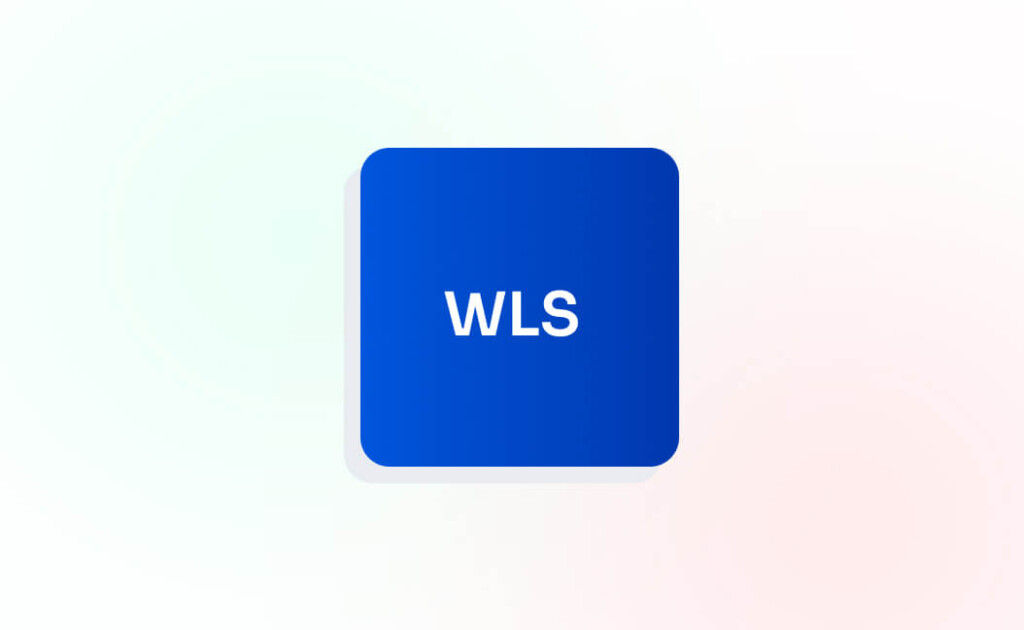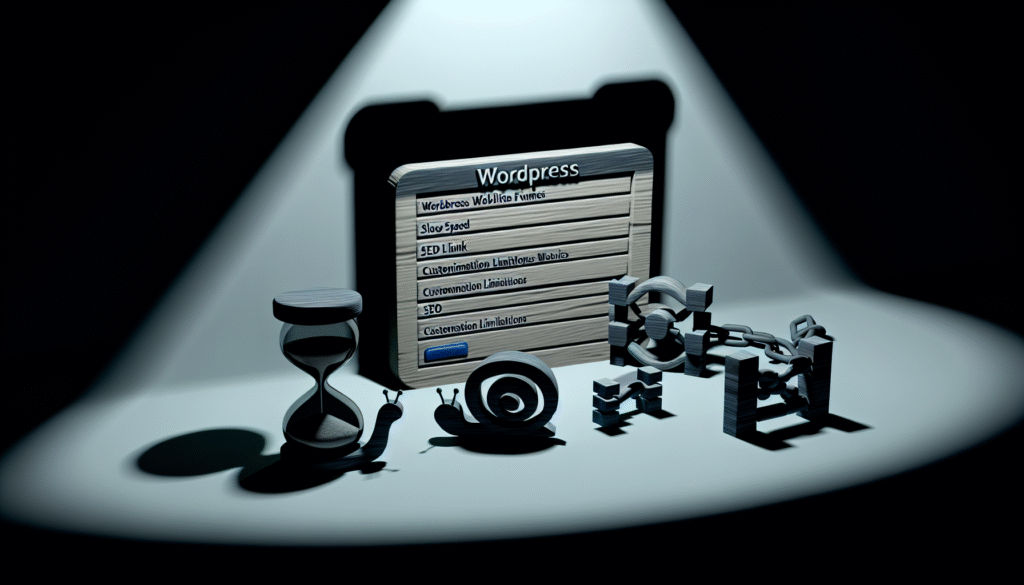What is Full Site Editing in WordPress?

As the digital landscape continues to evolve, so does the need for more intuitive and user-friendly website design tools. One such tool that has revolutionized the way we create and manage websites is WordPress's Full Site Editing feature. But what exactly is Full Site Editing in WordPress? How has it transformed the WordPress experience from its classic editor days? And more importantly, how can you leverage its features to enhance your website's user experience and overall functionality? In this comprehensive guide, we delve deep into the world of Full Site Editing in WordPress, exploring its key features, benefits, and how it has significantly changed the game for WordPress developers. We'll also provide a step-by-step walkthrough on how to use this feature, discuss some common challenges you might encounter and their solutions, and look into the future prospects of Full Site Editing in WordPress development. So, are you ready to unlock a new level of website design and management with Full Site Editing in WordPress? Let's dive in and demystify this powerful tool that is reshaping the WordPress landscape.
Table of Contents
Understanding the Basics of Full Site Editing in WordPress
Full Site Editing (FSE) is a transformative feature in the WordPress ecosystem. It is a game-changer that allows you to customize your entire website using blocks. This means you can design and modify your headers, footers, and sidebars, not just your content area. It's a step towards a more unified and user-friendly WordPress experience.
Before diving into Full Site Editing, it's crucial to have a checklist to guide you through the process. First, ensure you have a theme that supports FSE. Next, familiarize yourself with the new site editor and the template editing mode. Understand the different types of block templates and template parts. Lastly, learn how to create and manage reusable blocks. This checklist will help you navigate the new waters of Full Site Editing with ease.
Full Site Editing is not just about having more control over your website's design. It's about empowering users to build and customize their websites without needing to learn how to code. It's about making website building more accessible and inclusive. And most importantly, it's about continuing WordPress's mission to democratize publishing.
The Evolution of WordPress: From Classic Editor to Full Site Editing
Over the years, WordPress has undergone significant transformations, evolving from a simple blogging platform to a full-fledged content management system. The journey from the Classic Editor to Full Site Editing is a testament to WordPress's commitment to providing users with a more streamlined and intuitive website building experience. The Classic Editor, while user-friendly, offered limited customization options. This led to the introduction of the Gutenberg block editor in 2018, a game-changer that allowed users to build and customize their pages using blocks.
Fast forward to today, WordPress has introduced Full Site Editing, a feature that has revolutionized the way users design and build their websites. With Full Site Editing, users can:
- Edit all elements of their website directly from the block editor.
- Design and customize their headers, footers, and sidebars without the need for additional plugins or themes.
- Enjoy a consistent editing experience across their entire website.
This new feature is expected to provide users with unprecedented control over their website's design and layout, further solidifying WordPress's position as a leading content management system.
Key Features of Full Site Editing in WordPress
With the advent of Full Site Editing (FSE) in WordPress, the platform has taken a giant leap towards providing a seamless and unified editing experience. FSE allows users to customize every aspect of their website, from headers and footers to sidebars and content, all from a single interface. This eliminates the need for switching between different editors or using custom code, making website design more accessible to non-technical users. Furthermore, FSE supports block-based templates, which means users can create, save, and reuse their own custom designs across their website.
When compared to traditional WordPress editing, FSE offers a more intuitive and flexible approach. For instance, consider the following comparison table:
| Traditional WordPress Editing | Full Site Editing | |
| Customization Scope | Limited to content area | Entire website |
| Template Support | Requires custom code or plugins | Native block-based templates |
| User Experience | Multiple interfaces for different areas | Unified interface |
As evident from the table, FSE provides a comprehensive solution for website customization, making it a game-changer in the world of WordPress editing.
How Full Site Editing Enhances WordPress User Experience
One of the significant advancements in WordPress is the introduction of Full Site Editing (FSE). This feature has revolutionized the way users interact with their websites, offering a more streamlined and intuitive experience. FSE allows users to edit every part of their website, from the header to the footer, using the same familiar block editor. This consistency in the editing experience significantly reduces the learning curve for new users and increases efficiency for seasoned WordPress users.
There are several ways in which FSE enhances the user experience on WordPress. Here are a few:
- Unified Design Experience: FSE provides a consistent design experience across the entire website, eliminating the need to switch between different editors or customizers.
- Greater Flexibility: With FSE, users can customize every part of their website, including headers, footers, and sidebars, which were previously off-limits.
- Streamlined Workflow: FSE allows users to edit their entire site from a single interface, reducing the need to navigate between different areas of the dashboard.
- Increased Efficiency: The ability to use the same block editor for all parts of the website saves time and effort, making the website management process more efficient.
In conclusion, Full Site Editing is a game-changer in the WordPress ecosystem. It offers users an unprecedented level of control and flexibility over their websites, enhancing the overall user experience.
Step-by-Step Guide to Using Full Site Editing in WordPress
Mastering the art of full site editing in WordPress can significantly enhance your website's functionality and aesthetics. Full Site Editing (FSE) is a feature that allows you to customize your entire website, from header to footer, using blocks. It provides a unified, consistent editing experience across your site. Here's a step-by-step guide to help you navigate this powerful feature:
- Step 1: Navigate to the site editor in your WordPress dashboard.
- Step 2: Choose the area of your site you wish to edit (e.g., header, footer, or a specific page).
- Step 3: Select the block you want to add or edit.
- Step 4: Customize the block's settings to suit your needs.
- Step 5: Preview your changes and save when satisfied.
It's important to note that FSE is currently available in WordPress 5.8 and later versions. If you're using an older version, you'll need to update your WordPress installation to access this feature. Also, remember that while FSE is a powerful tool, it also requires a careful approach. Always preview your changes before saving to ensure they enhance your site's design and functionality, rather than detract from it.

Exploring the Benefits of Full Site Editing for WordPress Developers
Embracing the full site editing feature in WordPress can significantly enhance the workflow of developers. This innovative feature allows developers to have complete control over every aspect of their website design, from the header to the footer and everything in between. It eliminates the need for multiple plugins or themes, thus simplifying the design process. Moreover, it provides a unified, consistent editing experience, making it easier for developers to make changes and updates.
Another major advantage of full site editing is its flexibility. Developers can easily customize different parts of their website without having to delve into complex code. This feature is particularly beneficial for those who are not well-versed in coding. It also allows for greater creativity, as developers can experiment with different layouts and designs. Furthermore, full site editing is compatible with all themes, making it a versatile tool for all WordPress developers.
Lastly, full site editing can lead to improved efficiency. By providing a streamlined, unified editing experience, it can save developers a significant amount of time. They no longer have to switch between different interfaces or tools to edit different parts of their website. This can lead to faster project completion times and increased productivity. To maximize the benefits of full site editing, developers should ensure they are using the latest version of WordPress, familiarize themselves with the new interface, and regularly update their skills and knowledge.
Checklist for Full Site Editing:
- Ensure you are using the latest version of WordPress
- Familiarize yourself with the new interface
- Experiment with different layouts and designs
- Regularly update your skills and knowledge
Common Challenges and Solutions in WordPress Full Site Editing
Implementing WordPress Full Site Editing (FSE) can be a complex process, with several challenges that may arise. Understanding these challenges and knowing how to address them is crucial for a smooth transition to FSE. One common issue is the steep learning curve associated with mastering the new block editor. This can be mitigated by investing time in learning the new interface, using tutorials and guides, and practicing with the editor. It's also helpful to have a checklist of the key features and functions to learn.
Another challenge is the potential for compatibility issues with existing themes and plugins. It's important to test FSE with your current setup before fully implementing it. If issues arise, you may need to find alternative themes or plugins that are compatible with FSE. Regular updates and maintenance are also essential to ensure ongoing compatibility and performance.
Finally, the transition to FSE can be time-consuming, particularly for larger sites with many pages and posts. To manage this, it's advisable to plan the transition carefully, perhaps starting with less critical parts of the site. Regular backups are also crucial, to protect your content in case of any issues during the transition. By understanding and preparing for these challenges, you can make the move to Full Site Editing a success.
Future Prospects of Full Site Editing in WordPress Development
Exploring the horizon of Full Site Editing (FSE) in WordPress Development, we can anticipate a transformative shift in the way websites are designed and managed. The introduction of FSE is a game-changer, offering a unified, streamlined experience for developers and end-users alike. However, it's not without its challenges. On the positive side, FSE provides a consistent, block-based approach to site creation, eliminating the need for disparate themes and plugins. This simplifies the process, making it more accessible to non-developers. On the downside, the transition to FSE may be daunting for existing WordPress users accustomed to the traditional editor. There's also the concern of compatibility issues with older themes and plugins. Nonetheless, the potential benefits of FSE, such as increased flexibility, customization, and overall user control, make it a promising development in the evolution of WordPress.
Frequently Asked Questions
What are the prerequisites for using Full Site Editing in WordPress?
Full Site Editing is available in WordPress 5.8 and later versions. It is recommended to have a basic understanding of WordPress and its block editor, Gutenberg. Also, a theme that supports Full Site Editing is required.
Is Full Site Editing compatible with all WordPress themes?
Not all themes are compatible with Full Site Editing. It is recommended to use a theme that explicitly supports Full Site Editing to take full advantage of its features.
What are the advantages of Full Site Editing over page builders?
Full Site Editing provides a consistent, native experience within WordPress, eliminating the need for third-party page builders. It allows you to edit all parts of your site and see the changes in real-time. It also ensures better performance and compatibility with future WordPress updates.



